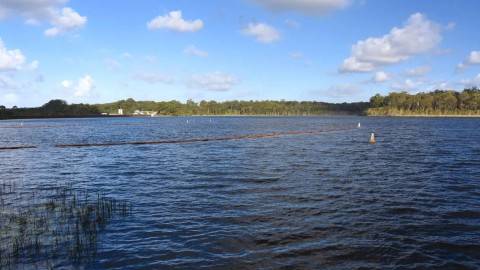It goes without saying that safety is a key concern on any construction site, and lots of work goes into mitigating safety risks and ensuring workers get back home safely at the end of the day. However, not all construction methods are equal in terms of safety, with some methods and machines designed to be inherently safer than others, and this holds true for pipeline installations.
Trenchless over open cut
It is well known that construction sites where excavation works take place are considered highly dangerous due to the risk of sudden excavation failures which limit the abilities of workers to escape if a collapse were to occur.
Any work undertaken in or near shafts or trenches is considered particularly high risk, with the risk level increasing the deeper the excavation is.
Open cut methods of pipeline installation require a large amount of excavation to take place along the entire length of the pipeline route, creating a greater risk to workers and increasing the chance of public interference, especially in urban areas.
On the other hand, trenchless methods require very little to no excavation, so this risk is either greatly reduced or designed out of the project.
While amongst trenchless methods, microtunnelling does carry a slightly higher risk due to the need to excavate an entry and exit shaft, excavation is minimal and contained to a small area, making it much safer than open cut.
Furthermore, machines such as the AXIS laser guided boring system have been designed with these risks in mind, offering a superior level of operator safety and reducing the risk of materials falling into the pit and hurting workers.
The AXIS has a number of unique safety features that no other microtunnelling machine on the market comes with such as the Falling Object Protective System (FOPS) safety enclosure.
The operator can stay in the FOPS safety enclosure for the duration of the drill and be fully protected from their surrounding environment, protecting them from above should anything fall into the pit and ensuring they aren’t exposed to the outside environment.
The FOPS safety enclosure has been rigorously tested to ensure it can stand the real world conditions of a construction site, with tests showing heavy equipment such as drill rods can fall onto it from as high as ten metres without showing signs of damage.
Being alert to dangers
One safety risk of trenchless pipeline installation is the machine coming in contact with a trench during drilling, which could be housing live wires that weren’t located by DBYD services or pre-project geotechnical surveys.
The AXIS is designed with gages – including a vacuum gauge at the rear of the machine – to alert the operator to condition changes so they can stop the drill and assess the situation to make sure it is safe to proceed.
As well as the pressure gages, the AXIS has an in-built strike alert mechanism that notifies the operator in the instance that the drill comes in contact with a power cable and becomes live.
By alerting the operator if the machine has become live, they can safely remain in the machine until the power source has been deactivated and it is safe to exit.
An alternative with a safety advantage
Undertaking a microtunnelling project using the right equipment can provide a number of safety benefits over other methods of pipeline installation, in particular open cut.
Machines such as the AXIS have been designed with safety in mind to help mitigate the potential safety risks associated with excavation and unforeseen conditions below ground that can become a problem if not caught early.
About Stuart Harrison
Global microtunnelling pioneer Stuart Harrison is the Managing Director of Edge Underground, where he specialises in on-grade microtunnelling installations with millimetre accuracy. Stuart is also the inventor of the AXIS Guided Boring system, and he is constantly working to improve the effectiveness of this and other trenchless systems used in the installation of gravity sewers.
This sponsored editorial is brought to you by Edge Underground. To discuss your next microtunnelling installation, contact Stuart on 1300 JACKED or at [email protected].















